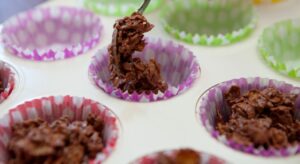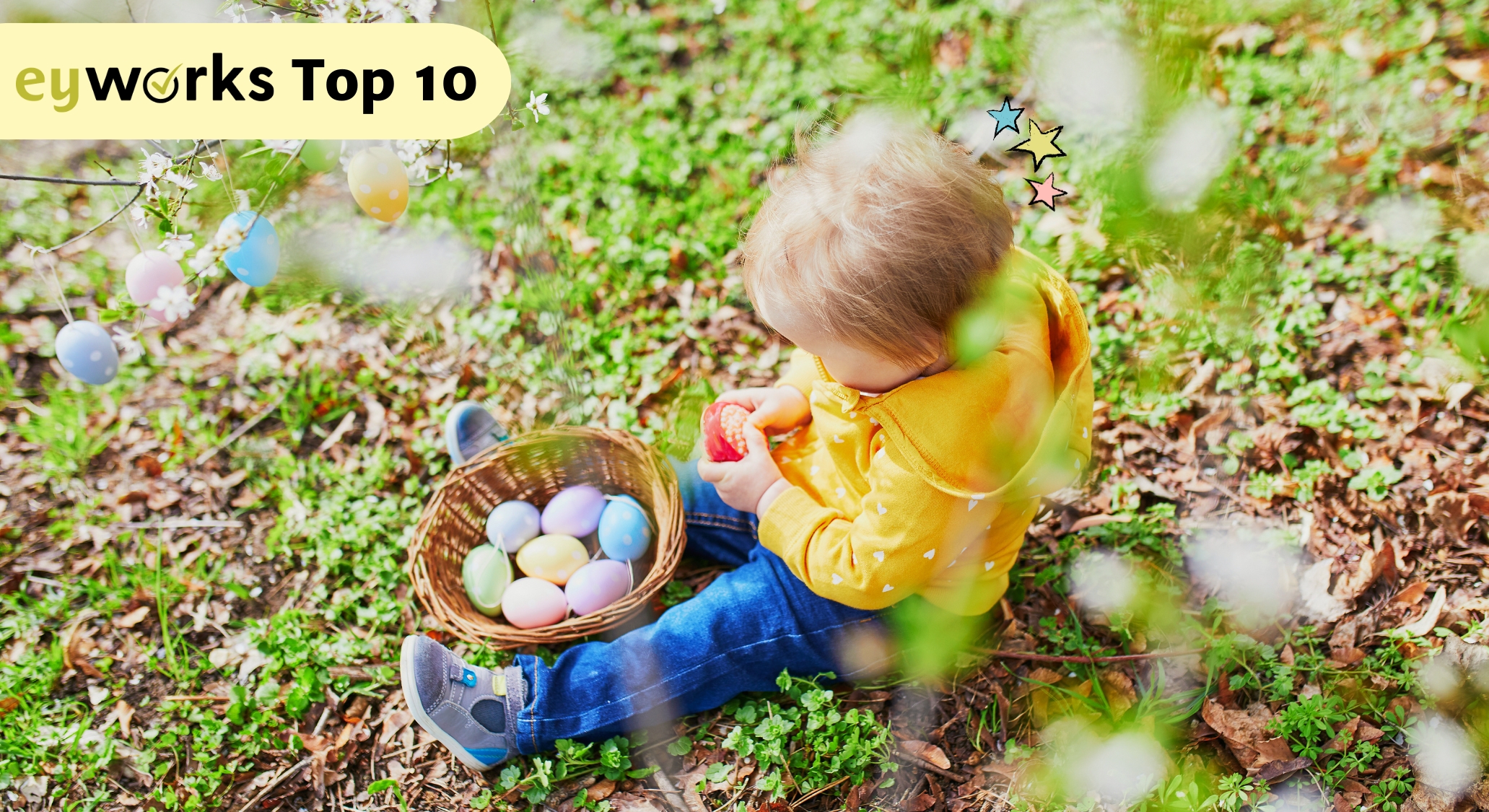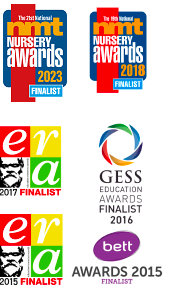As spring flowers bloom and Easter festivities approach, it’s the perfect time to infuse your nursery with a burst of energy and creativity. We’ve curated a list of our top 10 Easter activities for babies in Early Years settings. Plus, following on from an inspiring eymeets with Mandy Richardson, we’ll sprinkle in some tips on how to make these activities environmentally conscious too!
Contents:
Easter Egg Hunt
Springtime Tummy Time
Spring Storytime
Spring Nature Walk
Easter Card Making
Easter-themed Water Play
Spring Picnic
Egg Bowling
Bunny Hop Freeze Dance
Chocolate Bird’s Nests
Easter Egg Hunt
Setup:
For babies, create a simplified version of an Easter Egg Hunt by placing colourful eggs in a designated area within their reach. Use larger, easy-to-grasp eggs that make soft sounds when shaken. Place a few eggs in plain sight, while others may be partially hidden under soft, plush toys or blankets.
Learning Benefits:
Fine Motor Skills Development: The Easter Egg Hunt activity promotes fine motor skills development as babies use their hands to grasp and explore the colourful eggs, enhancing their coordination and dexterity.
Auditory Stimulation: Utilising larger eggs that make soft sounds when shaken provides auditory stimulation. This sensory experience contributes to the baby’s awareness of different sounds and enhances their sensory development.
Visual Stimulation and Cognitive Growth: Placing colourful eggs in plain sight encourages visual exploration and cognitive growth as babies identify and distinguish between various colours. This contributes to early cognitive development and visual perception.
Tactile Sensation and Texture Exploration: The use of soft, plush toys or blankets as hiding spots introduces a tactile element to the activity. Babies can feel and touch different textures, promoting sensory exploration and tactile sensation.
Problem-Solving Skills: As babies search for eggs, they engage in a simplified form of problem-solving by visually scanning the designated area and reaching for partially hidden eggs. This fosters early problem-solving skills and spatial awareness.
Eco-Friendly Tip: Use reusable and eco-friendly containers for the egg hunt, such as fabric bags or baskets.

Springtime Tummy Time
Setup:
For Springtime Tummy Time, set up a safe area with colourful mats and toys, strategically placing soft pillows for comfort. Engage with the baby using a cheerful tone and rotate toys to sustain interest. Encourage movement by prompting the baby to reach, lift their head, and explore, creating an enjoyable developmental experience in a soft and inviting environment.
Learning Benefits:
Enhanced Motor Skills Development: Springtime Tummy Time encourages babies to reach for toys, lift their heads, and explore their surroundings, promoting the development of crucial motor skills such as hand-eye coordination and muscle strength.
Sensory Stimulation: The use of colourful mats, soft pillows, and varied textures in toys provides a rich sensory experience. Babies engage with different tactile sensations, fostering sensory development and awareness.
Positive Social and Emotional Interaction: Interacting with the baby using a cheerful tone during tummy time creates a positive bonding experience. This contributes to the development of trust, emotional well-being, and a sense of security in the baby.
Cognitive Engagement: The strategic rotation of toys sustains the baby’s interest and curiosity, promoting cognitive development. Exposure to different shapes, colours, and textures during tummy time stimulates cognitive processes and early learning.
Comfort and Relaxation: Strategically placing soft pillows in the tummy time area not only supports the baby physically but also contributes to their comfort and relaxation. A comfortable and inviting environment enhances the overall enjoyment of the developmental activity.
Eco-Friendly Tip: Opt for products made from natural fibres, such as organic cotton or bamboo, to minimise environmental impact.
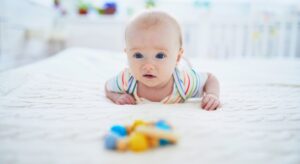
Spring Storytime
Setup:
Select board books with large, colourful images and simple text. Sit in a cosy space with babies and read the books, pointing to the pictures and engaging them with your voice.
Some books we recommend are:
That’s not my Lamb by Fiona Watt
Peter Rabbit: Easter Surprise by Beatrix Potter
Baby’s First Words: Easter by Carine Laforest
Learning Benefits:
Early Literacy Development: Engaging babies with board books featuring large, colourful images and simple text promotes early literacy development. Pointing to pictures while reading helps babies make connections between spoken words and visual representations, laying the foundation for language skills.
Cognitive Stimulation: The exposure to visually stimulating images and the engagement with simple text provide cognitive stimulation for babies. This activity encourages their ability to focus, concentrate, and make associations between words and pictures.
Language Acquisition: Reading aloud and engaging babies with your voice during the cosy reading session supports language acquisition. Babies absorb the rhythm, intonation, and structure of language, fostering their understanding of communication.
Bonding and Social Development: Sharing a cosy space and interactive reading time creates a positive bonding experience between caregivers and babies. This shared activity contributes to the baby’s social development and strengthens the emotional connection with the caregiver.
Introduction to Visual and Literary Arts: Exposure to well-illustrated books, such as “The Tale of Peter Rabbit,” “Llama Llama Easter Egg,” “We’re Going on an Egg Hunt,” and “The Dinosaur that Pooped Easter,” introduces babies to visual and literary arts. This early exposure lays the groundwork for an appreciation of storytelling and artistic expression.
Eco-Friendly Tip: Borrow books from local libraries or share books within the community to reduce the need for new printed materials.

Spring Nature Walk
Setup:
Take babies on a nature stroll in a safe, shaded area. Use a baby carrier or stroller for support, and point out gentle sights and sounds like rustling leaves, singing birds, and blooming flowers. Allow babies to touch soft leaves or petals under close supervision. On a rainy day, allow babies to watch and listen to the sound of raindrops outside.
Learning Benefits:
Sensory Stimulation and Awareness: Taking babies on a nature stroll exposes them to a variety of sensory stimuli, such as the rustling of leaves, singing birds, and blooming flowers. This enhances their sensory awareness, allowing them to explore and respond to the gentle sights and sounds of the natural environment.
Motor Skills Development: Whether carried in a baby carrier or seated in a stroller, the nature stroll provides opportunities for babies to observe and reach out to touch soft leaves or petals. These interactions contribute to the development of fine motor skills as they explore different textures under close supervision.
Language and Cognitive Development: Pointing out and describing natural elements during the stroll fosters language development. Babies benefit cognitively by associating words with real-world experiences, expanding their vocabulary and understanding of the environment.
Emotional Well-being and Bonding: Experiencing the outdoors positively impacts babies’ emotional well-being. The calming effect of nature, especially on a rainy day, provides a soothing backdrop, contributing to a sense of tranquillity. Additionally, the shared experience of nature strolls promotes bonding between caregivers and babies.
Connection with the Natural World: Allowing babies to watch and listen to the sound of raindrops during a rainy day nurtures an early connection with the natural world. This exposure fosters an appreciation for different weather conditions and elements of nature from an early age.
Eco-Friendly Tip: Encourage adults to collect litter during the nature walk, leaving the area cleaner than before.

Easter Card Making
Setup:
Make a hand-print bunny with babies. Simply paint your children’s hands with washable paint and press it onto a piece of paper. Once the paint is dry, you can draw on bunny ears and a face using markers or paint.
Learning Benefits:
Sensory Experience and Tactile Development: Creating a hand-print bunny provides babies with a sensory experience as they feel the texture of the washable paint on their hands. This tactile exploration contributes to their overall sensory development.
Fine Motor Skills Enhancement: Engaging in the hand-print activity involves coordination and control, enhancing babies’ fine motor skills. The act of pressing their painted hands onto paper encourages precise movements and strengthens hand-eye coordination.
Bonding Through Shared Activity: Creating hand-print bunnies is a shared activity between caregivers and babies. This bonding experience strengthens the emotional connection, providing a positive and enjoyable interaction between the caregiver and the child.
Eco-Friendly Tip: Create cards from recycled or upcycled materials, adding a personal touch while minimising waste.
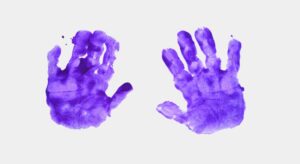
Easter-themed Water Play
Setup:
To set up Easter-themed Water Play, place a shallow container outdoors or indoors, filling it with a comfortable amount of water. Add floating plastic Easter eggs and baby-friendly water toys. Encourage the baby to splash and explore, describing colours and shapes for language development. Capture adorable moments during the supervised play, enhancing the joy of the experience.
Learning Benefits:
Sensory Development: Easter-themed Water Play provides a rich sensory experience as babies feel the water’s texture, explore floating eggs, and grasp baby-friendly toys, fostering sensory development and awareness.
Motor Skills Enhancement: Encouraging babies to splash and reach for floating Easter eggs and toys promotes the development of fine and gross motor skills, contributing to improved coordination and strength.
Language Development: Describing colours, shapes, and textures during the activity stimulates language development. Engaging in cheerful conversation enhances the baby’s vocabulary and language comprehension.
Cognitive Stimulation: The introduction of Easter-themed elements, such as floating eggs and toys, engages the baby’s cognitive processes. Observing and exploring different shapes and colours contributes to early cognitive development.
Emotional Bonding: Supervised water play creates a positive and enjoyable experience, fostering emotional bonding between caregivers and babies. Capturing adorable moments further strengthens the emotional connection during this festive activity.
Eco-Friendly Tip: Use rainwater or collected water from sustainable sources for Easter-themed Water Play, reducing reliance on treated water and promoting eco-friendly practices.
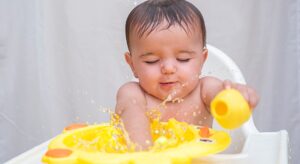
Spring Picnic
Setup:
Create a cosy picnic using soft blankets and stuffed animals. Place baby-friendly snacks on a blanket, and allow babies to explore and interact with the textures of the blankets and toys.
Learning Benefits:
Sensory Exploration and Tactile Development: Creating a cosy picnic with soft blankets and stuffed animals offers babies a sensory-rich environment. Exploring the textures of the blankets and toys contributes to tactile development, enhancing their ability to process and respond to different sensations.
Fine Motor Skills Enhancement: Allowing babies to interact with baby-friendly snacks on the blanket encourages fine motor skills development. Grasping and manipulating small snacks contribute to the refinement of hand-eye coordination and finger dexterity.
Social Interaction and Bonding: Sharing a cosy picnic setting fosters social interaction between babies and caregivers. The shared experience of exploring the blankets and toys while enjoying snacks creates a positive environment for bonding and strengthens the emotional connection.
Cognitive Stimulation: The exploration of textures, coupled with the introduction of baby-friendly snacks, provides cognitive stimulation. Babies engage in sensory and cognitive processes as they observe, touch, and interact with the items in the cosy picnic setting.
Promotion of Independence and Decision-Making: Allowing babies to explore and interact with the picnic setup promotes a sense of independence. Making choices about which items to touch or explore encourages early decision-making skills and a sense of autonomy.
Eco-Friendly Tip: Choose reusable or biodegradable picnicware and pack sustainable, locally sourced snacks to reduce environmental impact.
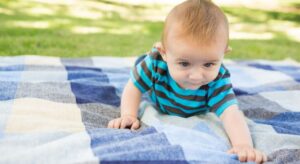
Egg Bowling
Setup:
Create a soft and safe bowling activity using lightweight, plush eggs. Set up soft “pins” or stuffed animals for babies to roll the eggs towards, exploring the cause-and-effect relationship.
Learning Benefits:
Gross Motor Skills Development: Engaging in the soft bowling activity with lightweight, plush eggs encourages babies to roll the eggs towards soft “pins” or stuffed animals, promoting the development of gross motor skills as they coordinate their movements.
Cause-and-Effect Understanding: The bowling activity introduces babies to the cause-and-effect relationship in a playful manner. As they roll the eggs, they observe the effect on the soft “pins,” fostering early cognitive development and an understanding of cause and effect.
Sensory Exploration and Tactile Development: Using plush eggs provides a sensory experience as babies touch and feel the soft texture of the eggs. This tactile exploration contributes to sensory development and enhances their ability to respond to different textures.
Hand-Eye Coordination: Rolling the plush eggs towards soft “pins” involves hand-eye coordination. Babies refine their ability to coordinate their visual perception with their hand movements, contributing to the development of this crucial skill.
Social Interaction and Bonding: Participating in the soft bowling activity with caregivers or other babies promotes social interaction and bonding. The shared experience of rolling the plush eggs and interacting with soft “pins” creates a positive and enjoyable environment for building social connections.
Eco-Friendly Tip: Choose biodegradable or recycled eggs for the bowling game to reduce the environmental impact of plastic use.
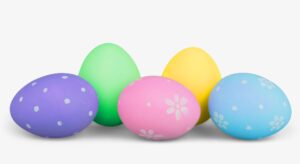
Bunny Hop Freeze Dance
Setup:
Hold babies in your arms and sway or bounce to bunny-themed music. Introduce brief pauses during the music, encouraging babies to freeze in place before resuming movement.
Learning Benefits:
Sensory Stimulation and Rhythm Recognition: Holding babies and swaying or bouncing to bunny-themed music provides sensory stimulation through movement and rhythm. Babies experience different physical sensations, enhancing their awareness of rhythm and movement patterns.
Auditory Development: Exposure to bunny-themed music during the activity contributes to auditory development. Babies listen to the varied sounds and rhythms, fostering an early appreciation for music and promoting auditory processing skills.
Balance and Coordination Improvement: Swaying and bouncing with brief pauses require babies to adjust their balance and coordinate movements. This helps improve their overall balance and coordination as they respond to changes in movement and rhythm.
Social and Emotional Bonding: The activity creates a positive and interactive environment for caregivers and babies. Swaying and bouncing together to music fosters a sense of security and strengthens the social and emotional bond between the caregiver and the baby.
Body Awareness and Control: Encouraging babies to freeze during brief pauses in the music promotes body awareness and control. This activity supports the development of a baby’s ability to regulate their movements and respond to external cues.
Eco-Friendly Tip: Opt for energy-efficient lighting if dancing indoors during the freeze dance to reduce energy consumption.

Chocolate Bird’s Nests
Setup:
For babies, opt for a baby-safe chocolate alternative and ensure the cornflakes are softened in milk. Mix the ingredients in a large bowl, allowing babies to explore the texture with their hands. Use silicone moulds or baby-safe containers for portioning, and skip the addition of small decorations.
Learning Benefits:
Sensory Exploration and Tactile Development: Engaging babies in making a baby-safe chocolate alternative with softened cornflakes encourages sensory exploration and tactile development. Babies can explore the texture of the mixture with their hands, enhancing their sensory awareness and tactile skills.
Fine Motor Skills Enhancement: Manipulating the mixture and portioning it into silicone moulds or baby-safe containers promotes fine motor skills development. This hands-on activity supports the refinement of hand-eye coordination and finger dexterity.
Cognitive Stimulation through Ingredient Exploration: Introducing babies to different ingredients, such as baby-safe chocolate alternatives and softened cornflakes, provides cognitive stimulation. Babies can observe and explore these materials, fostering early cognitive development and curiosity about the world around them.
Promotion of Independence and Decision-Making: Allowing babies to participate in mixing and portioning the ingredients promotes a sense of independence. The activity encourages them to make choices and decisions, contributing to their developing autonomy.
Safe and Enjoyable Culinary Experience: Creating a baby-safe chocolate alternative and using appropriate containers ensures a safe and enjoyable culinary experience for babies. Skipping small decorations eliminates potential choking hazards, prioritising their safety during the activity.
Eco-Friendly Tip: Incorporate locally sourced and organic ingredients for the chocolate bird’s nests, reducing the environmental impact of food production and supporting sustainable agriculture practices.
